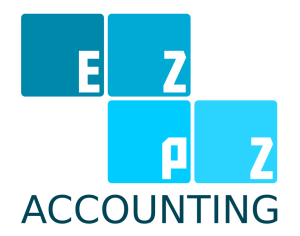Easy Ways to Understanding Accounting Terminologies

When learning something new, such as accounting ideas and terms, it is beneficial to make connections between what you already know and what you are attempting to learn. In some ways, it is similar to learning a second language, as deciphering the new word is part of the process of learning.
For instance, if you were attempting to translate the word papyrus, you could consider paper – and you would be correct.
Make an effort to establish some rational relationships between the terms used in accounting. Consider the word “accounting” for a moment before moving on. In essence, the accounting system is nothing more than a basic tallying of the activities that take place in your company.
A certain level of accounting knowledge is very important to ensure the smooth operation of a company. As a business owner, you should have a basic awareness of the words used in accounting.
Assets = Liabilities + Owner’s Equity
This is the most important equation in accounting. Many business owners grasp the significance of the terms but not what they actually mean.
A business owner’s mind may spin when debits, credits, ledgers, and journals are introduced. The majority of non-accountants are unfamiliar with accounting jargon, however a certain level of accounting knowledge is essential for a corporation to operate efficiently.
The owner of a firm does not need to be an accountant, but he or she must be familiar with certain words.
Separate accounts into assets and liabilities.
An asset is something a business holds that has monetary value. Business assets include cash, office equipment, automobiles, buildings, inventories, and investments.
Liabilities are the monetary sums owed to creditors by a firm. Liabilities include money due to other firms, credit card debt, salary owed to employees, vehicle loans, and mortgages on buildings.
Transactions
Let’s continue with transactions. Transactions are the day-to-day business activity or actions that produce your expenses and income.
Try to consider the term – transactions. Trans signifies across or through, and actions are economic activity. These are the fundamental components of an accounting system. Transactions are to accounting what raw materials are to a factory, or gasoline is to a car’s engine; they are real. How your accounting system handles them has an effect on your firm.
You must keep a record of your transactions in order to determine how much money your business earned and spent. Sounds self-evident, right? Ask your bookkeeper or accountant if certain transactions are clear.
If you are unclear about what transpired in the transaction and how you want it recorded, things can rapidly become complicated.
Depreciation
Suppose you purchased a brand-new car and spent $27,500 on it. Next year, the vehicle will have door dents, tire damage, seat stains, and an engine with 20,000 miles on it. You are aware that your car is no longer worth $27,500. This indicates that the value of your vehicle has decreased or deteriorated.
When it comes to business-owned equipment, this depreciation can be deducted as a cost. Your bookkeeper or accountant will be compelled to process this transaction at the end of the year due to depreciation.
It aids you on your taxes by boosting your expenses, as do any cash transactions. Obviously, the flip side of depreciation is that your equipment is now worth less.
Recognize the distinction between debits and credits.
A business uses debits and credits to represent incoming and outgoing cash. When an asset increases, a debit is recorded; when an asset decreases, a credit is recorded.
For instance, if a consumer purchases $100 on account, the accounts receivable asset is deducted. When this client returns and settles his account, the accounts receivable asset is credited.
For liabilities, the procedure is inverted; a rise in an obligation results in a credit, while a decrease results in a debit. When a business receives a loan for new equipment, the accounts payable account is credited. When a payment is made on an account, the account’s payable account is debited.
Differentiate the General Journal from the General Ledger.
The general journal is used to record daily transactions. The general ledger contains the account balances for all accounts, including accounts payable, accounts receivable, and equipment.
If a customer spends $50 in cash, for example, the typical journal entry would be a debit to cash and a credit to sales. In the general ledger, a $50 debit will be posted to the cash account and a $50 credit will be posted to the sales account.
Analyze the Statement of Income and Balance Sheet.
These two financial statements depict the financial health of your business. The Income Statement displays the business’s total revenue, total costs, and net profit or loss. It is composed of monthly and annual components, but can also be entirely quarterly.
The balance sheet illustrates the formula Assets = Liabilities + Owner’s Equity and lists the balances of all the company’s accounts.
